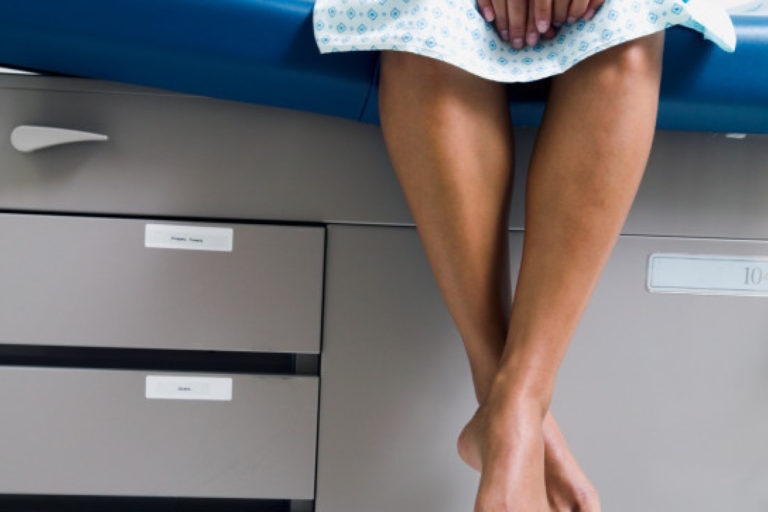By Aimee Gallagher, MPH, MS, Scientific Program Manager at SWHR
Uterine fibroids were something that I didn’t know a thing about until I walked out of my healthcare provider’s office in August 2014. I showed no other symptoms, yet I was carrying around a cantaloupe-sized tumor that seemed to be almost hidden in my body.
Fibroids, also known as leiomyomas, are benign tumors that develop from the smooth muscular tissue of the uterus, and are the leading cause of hysterectomy [1]. Their growth is fueled by estrogen, making women in their reproductive years more prone to them. As many as 20 to 50 percent of women live with fibroids [2], with African American women about three times more likely to experience fibroids than white women [3]. Many women never experience the symptoms [2], which can include heavy menstrual bleeding, pelvic pressure, frequent urination, and back pain, just to name a few.
The type of fibroid, too, can influence symptoms. Different types of fibroids include submucosal (growth into the uterine cavity), subserosal/pedunculated (outside, but connected to the uterus) and intramural (inside the wall of the uterus). Even the location, size and number of fibroids can influence a woman’s symptoms, or lack thereof.
Most fibroids are not cancerous – more than 99 percent, in fact [4]. While the exact cause of uterine fibroids is still unknown, researchers and clinicians point to genetic changes and hormones. If a woman’s mother had fibroids, she is three times more likely to have them. Research also shows that women who are overweight or who eat a lot of red meat are more prone to develop fibroids [5]. Currently, there is no way to prevent fibroids [6].
My story is a bit different than the typical fibroid story. In the summer of 2014, I was lying down and noticed a large bump on the right side of my stomach. I tend to be the kind of person who is fascinated by health issues and I’m not a worrier, so I assumed it was food moving through my digestive system. However, I called a friend who is a nurse practitioner and she advised me to ‘watch and wait.’ The protrusion was never visible when I was standing, only when lying down. After two months of watching and waiting, I made an appointment to see an internist.
After examination, I was sent for two ultrasounds. From there, I was advised to see a gynecologist and received my diagnosis: I was toting around a three-pound, cantaloupe-sized pedunculated fibroid. I was told to schedule surgery and plan for three nights in the hospital and six weeks of recovery. I would be having the equivalent of a Cesarean section.
My thoughts were scattered – the possibility of the fibroid being cancerous came up, as did the possibility of needing a hysterectomy or a blood transfusion. I scanned dozens of peer-reviewed medical journal articles, medical websites and had many conversations with friends who are in the healthcare field – all of which left me reassured that I’d be fine.
In December 2014, I had the surgery and enjoyed my six weeks of recovery. Since then, I have not experienced any complications, have healed rather quickly and am now three pounds lighter!
I share my story of discovery, treatment, and recovery to encourage other women to advocate for their health. If you notice something that is abnormal, whether it is a new mole, feeling tired all the time, or a fibroid protrusion, be your own advocate. Ask questions. Get answers.
The Society for Women’s Health Research encourages all women to be their own health advocates and understand how they play an important role in their healthcare. Learn more about the work we do by visiting our website.
References:
1. http://www.ncbi.nlm.nih.gov/pmc/articles/PMC3787340/
2.http://www.hopkinsmedicine.org/healthlibrary/conditions/gynecological_health/uterine_fibroids_85,P00560/
3. http://www.fibroids.net/homepage.html
4.http://www.hopkinsmedicine.org/healthlibrary/conditions/gynecological_health/uterine_fibroids_85,P00560/
5. http://www.womenshealth.gov/publications/our-publications/fact-sheet/uterine-fibroids.html
6. http://www.mayoclinic.org/diseases-conditions/uterine-fibroids/manage/ptc-20212690
